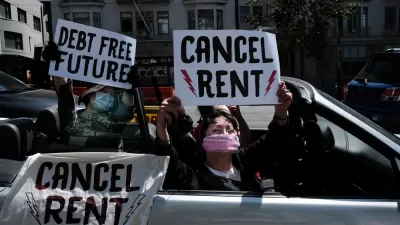For decades, Houston has experienced car-oriented development, giving little attention to other forms of transportation. In recent years, however, rapid population growth and increase in traffic congestion has the city revisiting alternate options

In the developed world, the municipal systems we rely on are largely invisible and universal. In mansions and studio apartments alike, flip a switch and the lights come on; turn a tap and water flows out.
Transportation is a different matter. The way we get from place to place varies greatly, influenced by location, lifestyle, and socioeconomic status. From driving an SUV to cycling or riding the subway, how we choose to navigate our cities is often seen as a reflection of both our personalities and our life circumstances.
But while individual and cultural transit preferences can seem immutable, history proves otherwise. Around the globe, it’s not uncommon for massive shifts in mobility patterns to occur over a relatively short period of time. Deeply influenced by political, technological, economic, ecological, and demographic factors, transportation is constantly shaped by (and shaping) its surroundings.
Case in point: Houston. Long known as a car town, it has made significant progress in diversifying its transit options
The United States’ fourth-largest city by population, Houston has a strong economy and a remarkably diverse population. But this success also brings challenges. Four million additional people are expected to arrive by 2040, with much of the growth occurring in car-dependent subdivisions that continue to expand the metropolitan borders. Officials predict a 60% increase in traffic — difficult to imagine in a city where rush-hour congestion is a common gripe.
As is true of most North American cities, Houston’s car-centric transportation system has many other downsides as well. Maintaining a 25,000-mile road network is difficult and costly. Public health suffers; a 2012 study by local authorities recommended making streets more pedestrian- and bike-friendly to counter obesity and related challenges.
FULL STORY: Houston rethinks mass transit

Maui's Vacation Rental Debate Turns Ugly
Verbal attacks, misinformation campaigns and fistfights plague a high-stakes debate to convert thousands of vacation rentals into long-term housing.

Planetizen Federal Action Tracker
A weekly monitor of how Trump’s orders and actions are impacting planners and planning in America.

In Urban Planning, AI Prompting Could be the New Design Thinking
Creativity has long been key to great urban design. What if we see AI as our new creative partner?

King County Supportive Housing Program Offers Hope for Unhoused Residents
The county is taking a ‘Housing First’ approach that prioritizes getting people into housing, then offering wraparound supportive services.

Researchers Use AI to Get Clearer Picture of US Housing
Analysts are using artificial intelligence to supercharge their research by allowing them to comb through data faster. Though these AI tools can be error prone, they save time and housing researchers are optimistic about the future.

Making Shared Micromobility More Inclusive
Cities and shared mobility system operators can do more to include people with disabilities in planning and operations, per a new report.
Urban Design for Planners 1: Software Tools
This six-course series explores essential urban design concepts using open source software and equips planners with the tools they need to participate fully in the urban design process.
Planning for Universal Design
Learn the tools for implementing Universal Design in planning regulations.
planning NEXT
Appalachian Highlands Housing Partners
Mpact (founded as Rail~Volution)
City of Camden Redevelopment Agency
City of Astoria
City of Portland
City of Laramie





























